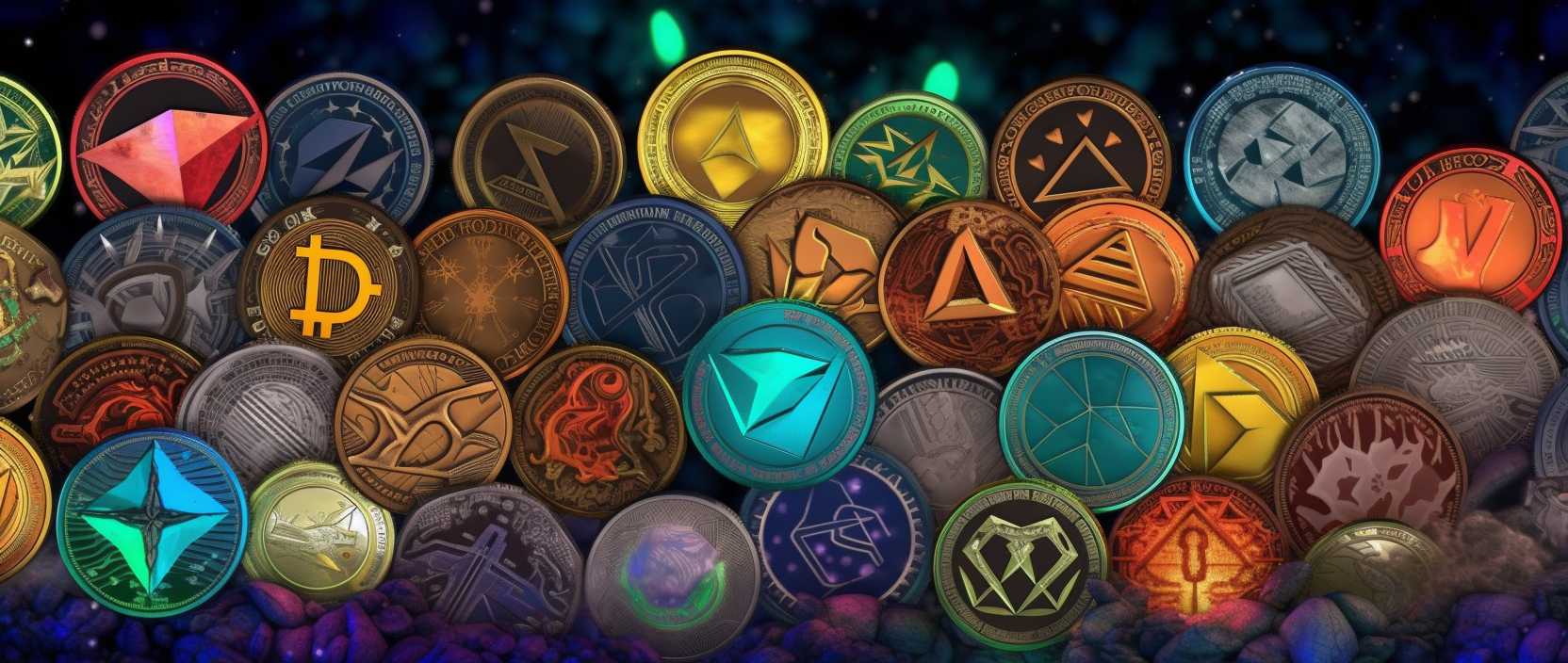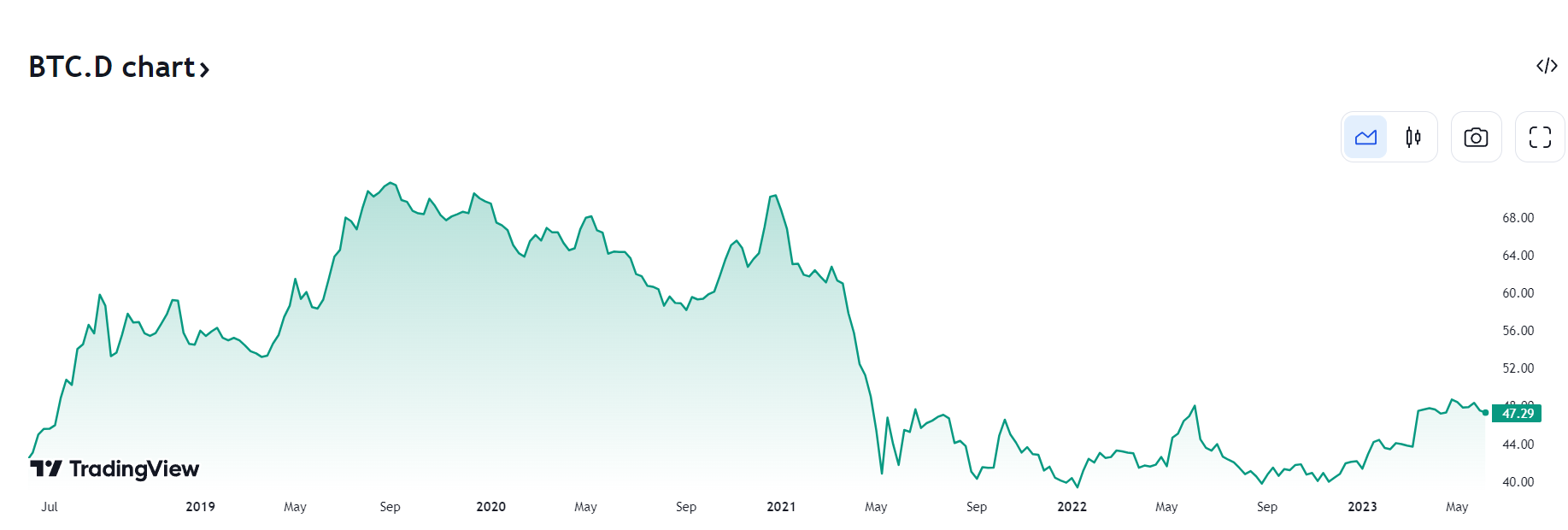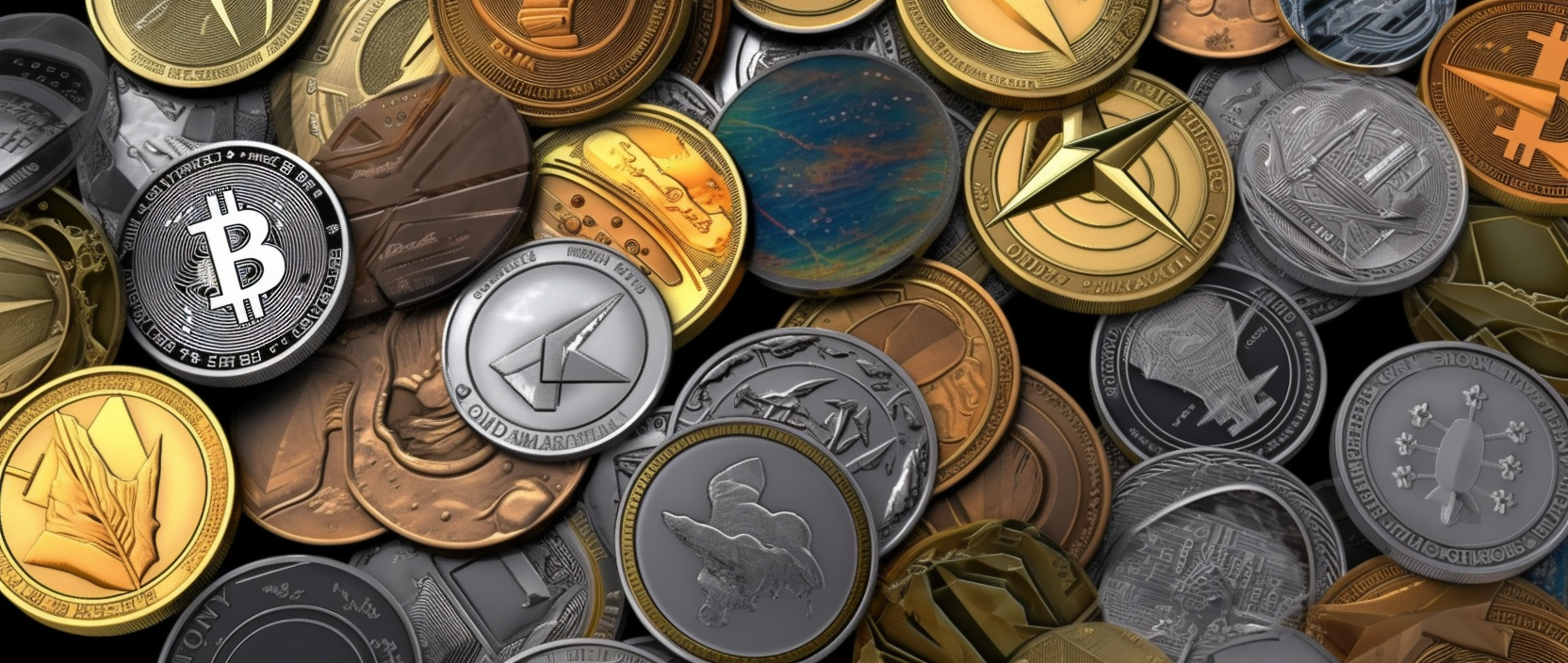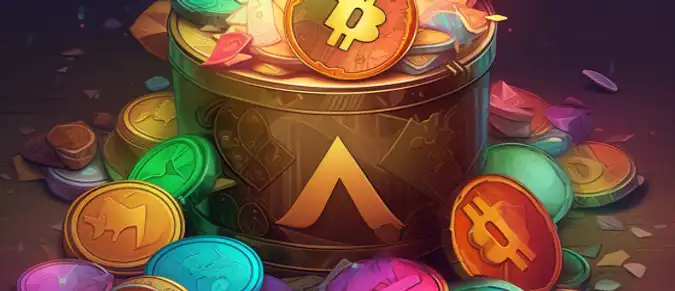Altseason is a relatively short period of time during which cryptocurrencies and tokens grow faster than Bitcoin.
Contents:
- What is altseason? Growth of altcoins and market cycles
- Factors influencing altseason
- Altcoin Index: Tracking altseason and market dynamics
- Asset capitalization
- Choosing the right strategy during altseason
- Opportunities and risks during altseason
What is altseason? Growth of altcoins and market cycles
In most cases, altseason occurs when investors start moving their funds from Bitcoin to other cryptocurrencies in order to diversify their portfolios and maximize potential profits. As a result of significant capital inflows, mid-cap and small-cap cryptocurrencies begin to demonstrate rapid growth, which can reach tens or even hundreds of percentage points.
Altseason is directly related to the overall cycles of the cryptocurrency market, which are determined by alternating bullish and bearish trends.
A bullish market occurs when buyers dominate the market, expecting asset prices to rise and seeking to make a profit. In contrast, a bearish market is characterized by sellers predominating, aiming to sell their coins before their value decreases.

During a period of bull dominance in the market, most digital assets tend to rise. This creates a favorable environment for altcoins as investors seek opportunities to increase their income and take advantage of the upward momentum.
Factors Influencing Altseason
Altseason occurs as a result of several key factors that are most significant and important to understand. Let's consider the most important ones below:
- Bitcoin Dominance - This metric reflects the ratio between the market capitalization of the primary cryptocurrency and the total market capitalization of digital assets. During altseason, there is usually a decrease in the market share occupied by BTC as capital flows into other cryptocurrencies.
- Market Sentiment - Market sentiment and trader psychology influence the start of altseason. Traders may sell BTC and move to alternative assets for quick profits. A high price of BTC can deter buyers, drawing attention to altcoins. The Fear and Greed Index helps track market sentiment by considering various factors and data. It provides an objective assessment based on volatility, trading volume, social media activity, and market momentum.
- News and Events - News and events in the cryptocurrency space can either bring altseason closer or push it further away. Major announcements, partnerships, regulatory changes, and technological breakthroughs can generate interest and investments in specific assets, driving their prices. Investors should stay updated on news and social media to identify such catalysts. For example, the surge of interest in DeFi protocols in 2020-2021 led to price increases in associated tokens.
- Technological Advancements - Innovative advancements in the cryptocurrency space, including blockchain improvements and new features, can trigger altseason in specific segments. An example is the growing interest in blockchain scaling solutions such as rollups and their associated tokens, such as Optimism and Arbitrum.

Accurately identifying the start of altseason is crucial for traders who seek to capitalize on market opportunities. Specialized services and metrics can help with this.
Altcoin Index: Tracking Altseason and Market Dynamics
The altcoin index is compiled by summing up the ROI of the top 50 altcoins over a 90-day period that exceeds Bitcoin's ROI. The resulting sum is divided by 50 and multiplied by 100.
For example, with an index value of 78 as shown in the screenshot, it means that 78% of the altcoins included in the index have outperformed BTC in the past 90 days. If the value reaches 75 and above, altseason begins. A drop below 25 indicates the onset of the Bitcoin season.

Some analytical platforms offer their own indices that track the movement of altcoins relative to BTC. These indices help traders assess market dynamics and determine when altseason is in its most active state.
Asset Capitalization
Market capitalization of assets is another indicator of the start of altseason. During this period, the overall market capitalization of altcoins sharply increases, indicating a shift in investment sentiment and an increased demand for alternative cryptocurrencies. It is also important to pay attention to leading coins such as ETH, DOT, ATOM, DOGE, etc., to determine the shift of interest from BTC.
Which Strategy to Choose During Altseason?
Altseason offers traders the opportunity to invest in promising altcoins with the goal of potential gains from the success of multiple assets.
To determine possible entry and exit points for trades, traders can rely on technical analysis tools such as:
| # | Analysis Element |
|---|---|
| 1 | Chart Patterns |
| 2 | Indicators |
| 3 | Volume Analysis |
By analyzing price charts and identifying key support and resistance levels, traders can make more informed decisions about their trading operations.
Studying the activity of large investors, also known as "whales," is an effective way to forecast market volatility. By tracking addresses with significant balances, one can gain insights into their buying and selling patterns. By analyzing the trades executed by whales, traders and investors can identify potential market trends and predict price movements.
To avoid mistakes when selecting an asset for purchase, it is also recommended to conduct a thorough project analysis.
Opportunities and Risks in Altseason
While altseason offers market participants numerous lucrative opportunities, it also comes with certain risks that traders should be aware of. The altcoin season is usually accompanied by increased market volatility, and sharp price movements can result in significant profits as well as substantial losses. Traders are advised to exercise caution, set stop-loss orders, and effectively manage risks to protect their capital.

Furthermore, altcoins with small market capitalization often face the issue of low liquidity during altseason. This can make it challenging to execute trades at desired prices, leading to slippage or increased trading costs.
However, understanding the dynamics of altseason, monitoring market sentiments, and employing appropriate trading strategies can help market participants navigate this exciting and dynamic period.





